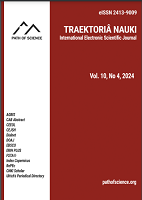Optimisation, Simulation, and Characterisation of Mahogany (Khaya Senegalensis) Seed Oil Extract
Optimisation, Simulation, and Characterisation of Mahogany (Khaya Senegalensis) Seed Oil Extract
Author(s): Dauda Baba, Umar Omeiza Aroke, Jibril Mohammed, Saidat Olanipekun GiwaSubject(s): Business Economy / Management, Agriculture, Energy and Environmental Studies, Environmental Geography, ICT Information and Communications Technologies, Socio-Economic Research
Published by: Altezoro, s. r. o. & Dialog
Keywords: Characterisation; mahogany seed; optimisation; response surface methodology; simulation; solvent extraction;
Summary/Abstract: The increasing demand for sustainable biofuel alternatives has encouraged the exploration of non-edible seed oils, with mahogany (Khaya Senegalensis) seed oil emerging as a promising candidate. This study investigates the optimisation of oil extraction from mahogany seeds using a combined response surface methodology (RSM) approach and process simulation. Soxhlet extraction with n-hexane as the solvent was employed, and the effects of extraction time, temperature, solvent/seed ratio, and particle size on oil yield were evaluated. A central composite rotatable design (CCRD) was used to develop a statistically significant model that accurately predicted oil yield based on the selected process parameters. Optimisation through RSM identified the optimal extraction conditions as 106 minutes extraction time, 68°C temperature, 5.05 ml/g solvent/seed ratio, and particle size of 1 mm. These conditions resulted in a maximum experimental oil yield of 58.9%, which agreed with the model's prediction of 61.17%. The extracted oil was characterised using gas chromatography-mass spectrometry (GC-MS) and Fourier transform infrared spectroscopy (FTIR). The analysis revealed a high content of unsaturated fatty acids, primarily linoleic acid (38.93%) and oleic acid (24.43%); other minor components, such as palmitic acid (0.34%) and stearic acid (2.74%), were also present making it suitable for biodiesel production. Furthermore, an Aspen Plus® model was developed to simulate the entire extraction process, including purification and solvent recovery. Sensitivity analysis and optimisation of the model led to 99.99% oil purity and complete hexane recovery, demonstrating the potential for sustainable and efficient oil extraction for the biodiesel production process. This study highlights the efficacy of combining experimental optimisation through RSM with process simulation for maximising oil yield and achieving high-quality oil suitable for biodiesel production.
Journal: Traektoriâ Nauki
- Issue Year: 10/2024
- Issue No: 8
- Page Range: 6062-6078
- Page Count: 17
- Language: English

